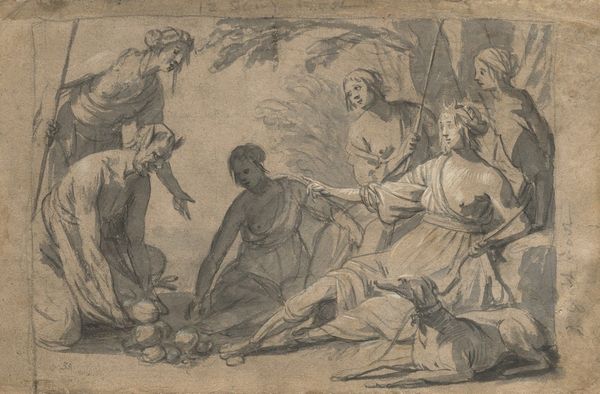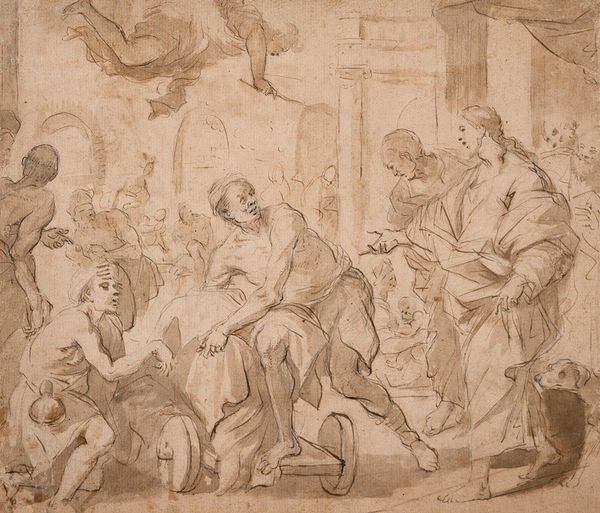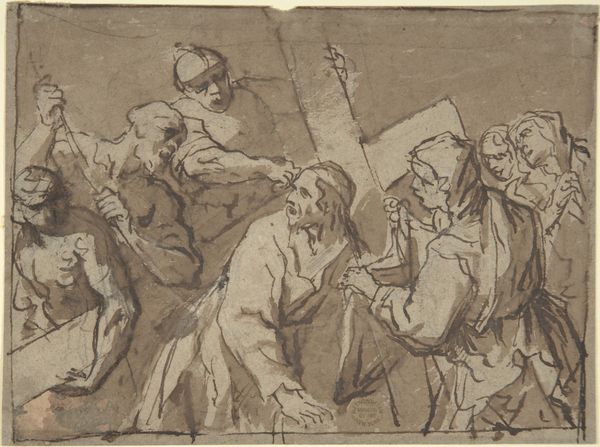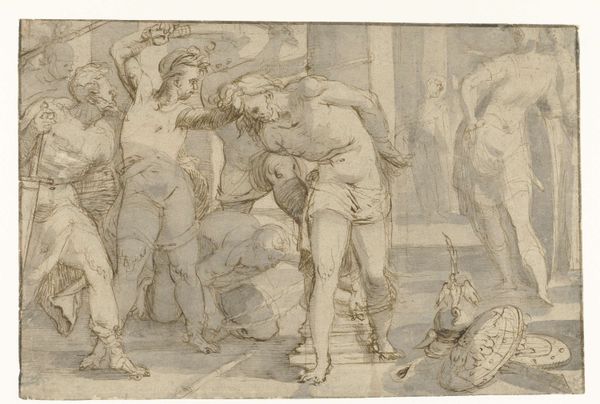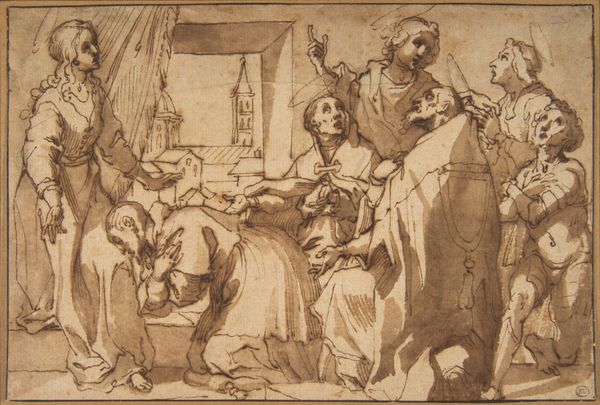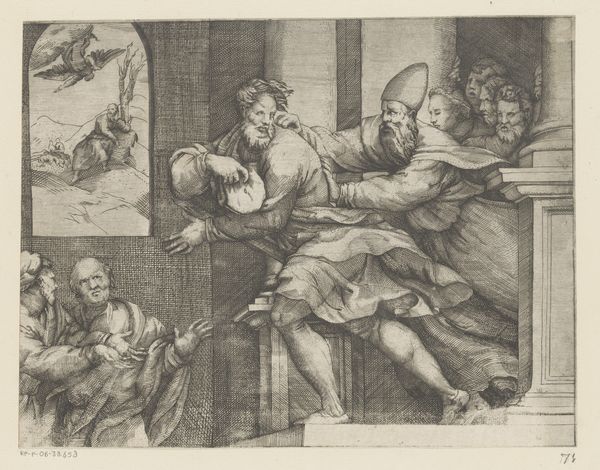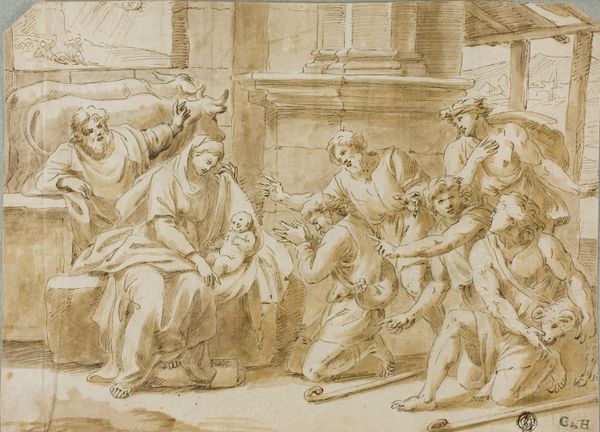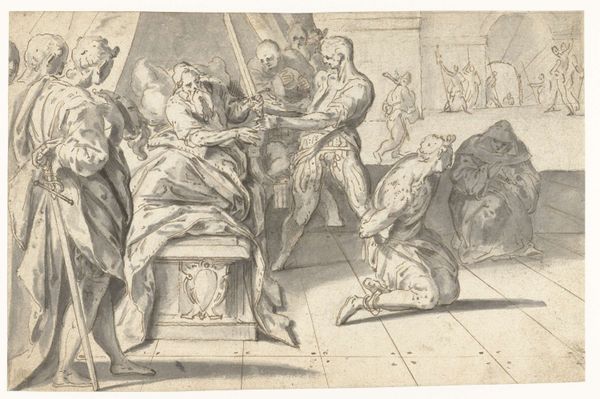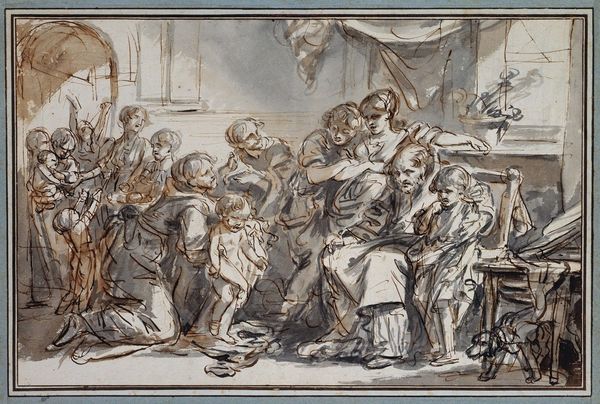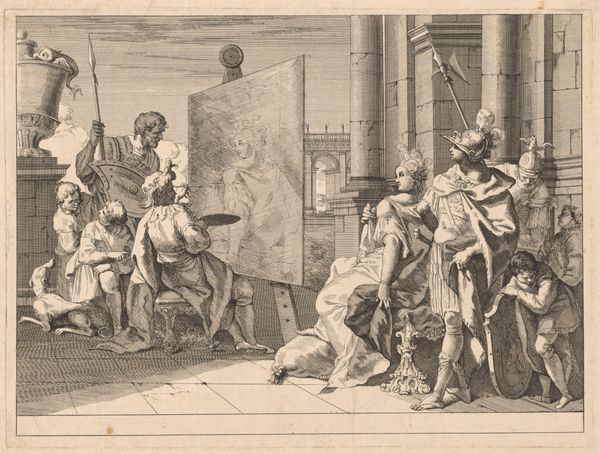
Alexander the Great Offering His Concubine Campaspe to the Painter Apelles 1793 - 1797
0:00
0:00
drawing, pen, charcoal
#
pencil drawn
#
drawing
#
pencil sketch
#
charcoal drawing
#
figuration
#
pencil drawing
#
group-portraits
#
pen
#
charcoal
#
history-painting
Copyright: Public Domain: Artvee
Editor: So, here we have "Alexander the Great Offering His Concubine Campaspe to the Painter Apelles," created between 1793 and 1797 by Gaetano Gandolfi. It’s a drawing using pen, charcoal, and pencil. The whole scene feels…theatrical. So grand, so performative. What’s your take on it? Curator: Ah, yes! Performative is a wonderful word. Gandolfi really captures that historical grandstanding, doesn't he? You know, legend has it that Alexander was so smitten with Campaspe that he realized Apelles would capture her beauty in a way he couldn't, through mere possession. What a thought – valuing artistic immortality over personal desires! Do you get a sense of that from their expressions? Editor: Hmmm, I see Alexander's arm gesture feels like he's both giving and taking away, a bit conflicted. The concubine, though... I wonder what *she's* thinking! Is she even a person in this transaction? Curator: Precisely! Now you’re diving into the trickier questions this drawing provokes. Is she an object of beauty, an instrument of power, or does she possess agency of her own? Gandolfi’s leaving that wide open. It mirrors the debates of his own time, right after the French Revolution. Whose story gets told, and by whom? Editor: Wow, I hadn’t thought about it in that light. The timing adds a whole layer of complexity to it. Curator: The drama of history with the whisper of revolution; a pretty intoxicating combination. It certainly leaves a lasting impression, I’d say! Editor: It does! Now I have a lot more to consider about Alexander, Campaspe, and the artist! Thanks!
Comments
No comments
Be the first to comment and join the conversation on the ultimate creative platform.
